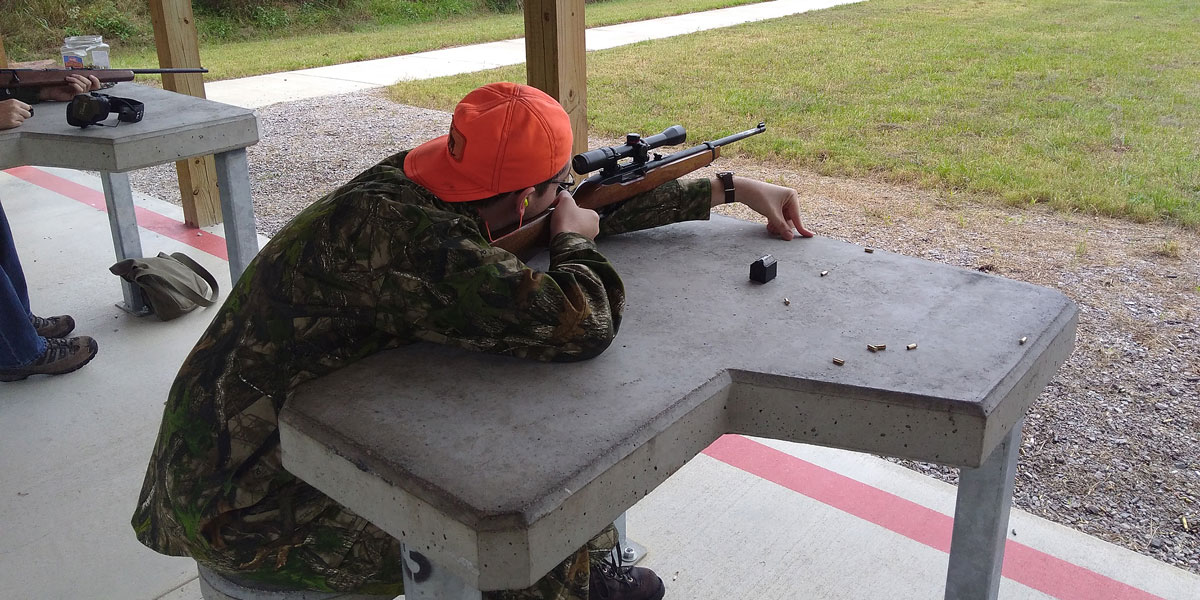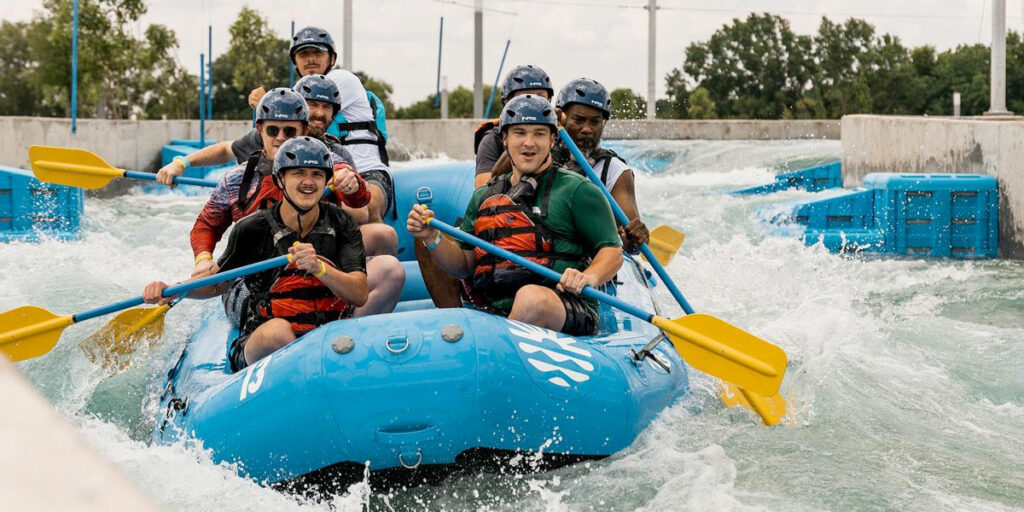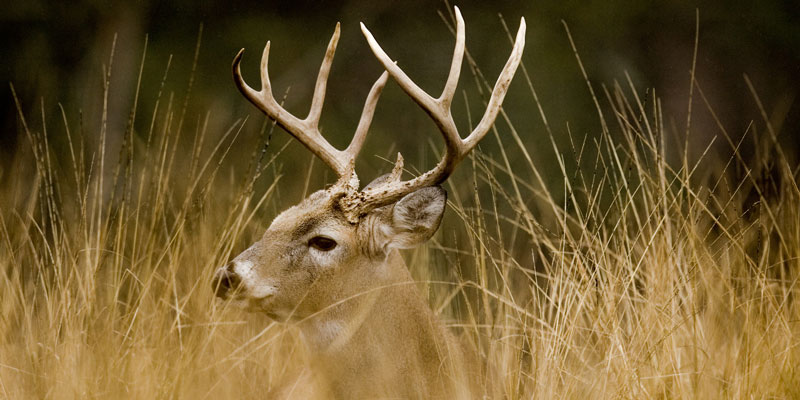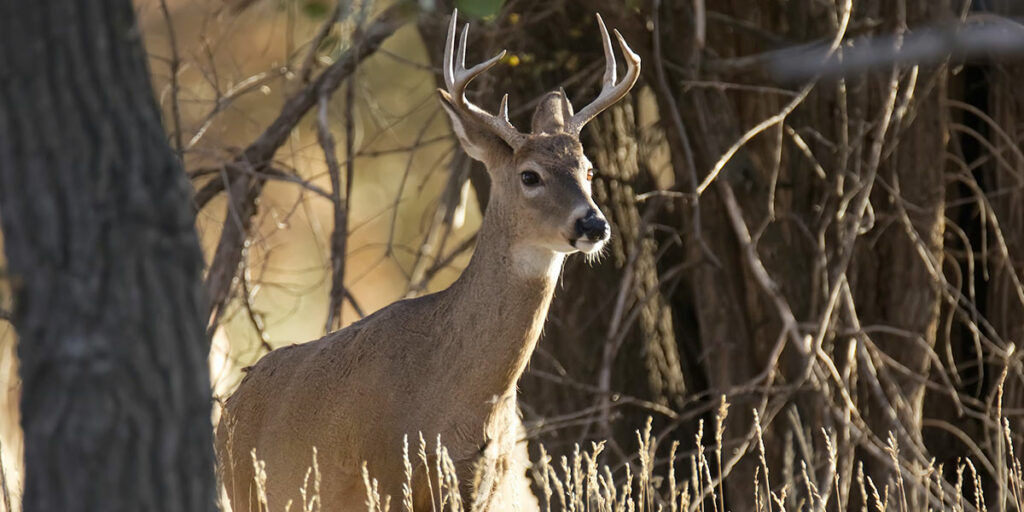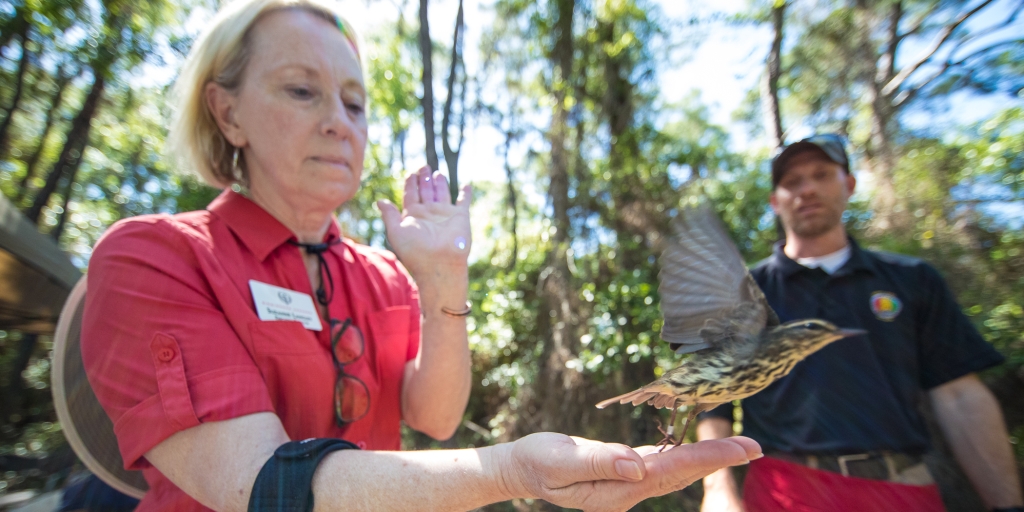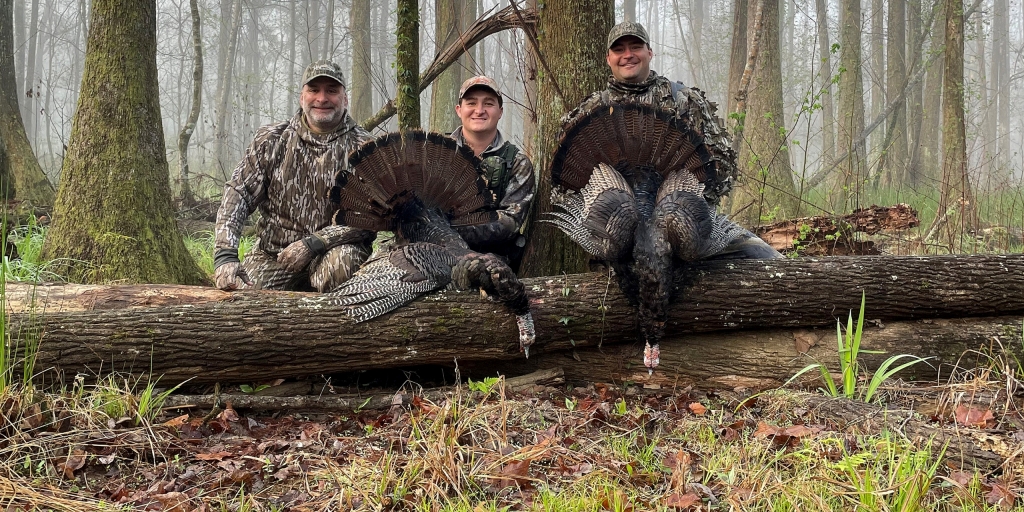Alabama hunters deserve a roaring round of applause for their safety awareness. Not only did hunters complete the 2021-2022 hunting seasons without any hunting-related fatalities, a first for Alabama since accidents started being recorded in 1974, they also repeated the phenomenal achievement with no hunting-related fatalities for the 2022-2023 seasons.
“Two years in a row, is that not great news?” said Capt. Marisa Futral of the Law Enforcement Section for the Alabama Department of Conservation and Natural Resources’ (ADCNR) Wildlife and Freshwater Fisheries (WFF) Division. Futral also serves as the WFF Hunter Education Coordinator. “I hope we were able to accomplish that because people are paying more attention to treestand safety, making sure their children are taking hunter education classes, making sure all the equipment is working properly and everything is in good working condition before they climb.”
WFF Director Chuck Sykes applauded all those involved in promoting hunter education and safe hunting across Alabama.
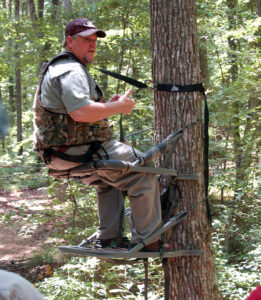
Futral said she hopes the younger generation will become enthralled with all that the outdoors has to offer, including hunting. She has seen some indications that could be happening.
“We’re seeing children taking the hunter ed course whose parents haven’t taken a hunter ed course,” she said. “I think the children are coming around and telling their parents what they need to do to be safe. You know, a lot of people in Alabama are grandfathered in. That could be part of it. We’ve also seen a lot of kids coming to hunter ed and dragging their parents who have never hunted with them. That’s interesting.”
The Alabama Legislature passed a law in 1992 that made hunter education mandatory to be able to purchase a hunting license to try to reduce the number of accidents. Anyone born before August 1, 1977, was grandfathered in and is exempt from the hunter ed requirement. The Alabama Wildlife Heritage Act of 2007 provides a mentor provision for hunter education. Hunting license buyers have the option to hunt under the “supervision required” status in lieu of passing the hunter education course. However, successful completion of an approved hunter education course is mandatory for all non-supervised hunting license buyers. Hunters under supervision must be under normal voice control, not to exceed 30 feet away from a properly licensed hunter 21 years of age or older. The supervising person cannot be the holder of a “supervision required” license.
Futral said the number of youths who are taking hunter education courses is steady at about 13,000 a year, and the number of overall hunting licenses sold is around 300,000.
During the 2022-2023 season, four non-fatal firearms accidents and 15 non-fatal treestand accidents occurred.
“Last year we had fewer non-fatal firearms accidents than the year before, but our treestand accidents went back up,” Futral said. “Although the accidents were non-fatal, we want to get those folks to focus more on safety.
“The ones who are falling while climbing, if they would have their safety harness attached to the tree, that would solve that. And when you’re climbing into a shooting house, make sure you have three points of contact, either two hands and one foot or two feet and one hand.”
The reasons cited for last season’s 15 treestand accidents were:
- Stand fell on victim
- Improper assembly of ladder stand
- Fell while moving stand
- Fell while getting into climbing stand
- Fell while descending
- Overloaded rated weight of the stand
- Improper assembly of ladder stand to tree
- Stand not secured properly to tree
- Fell while climbing into position
- Fell while repositioning
- Fell while climbing into shooting house
- Fell while standing up to shoot
- Fell while climbing into stand as straps broke
- Fell while settling into stand
- Fell while adjusting tree saddle
WFF Hunter Education urges hunters to follow the 11 guidelines for using a treestand safely:
- Always wear a safety harness, also known as a fall-arrest system, when you are in a treestand, as well as when climbing into or out of a treestand. Statistics show that the majority of treestand incidents occur while climbing in and out of a stand.
- A safety strap should be attached to the tree to prevent you from falling more than 12 inches.
- Always inspect the safety harness for signs of wear or damage before each use.
- Follow all manufacturers’ instructions for use of a safety harness and stand.
- Follow the three-point rule of treestand safety. Always have three points of contact to the steps or ladder before moving. This could be two arms and one leg holding and stepping on the ladder or one arm and two legs in contact with the ladder before moving. Be cautious that rain, frost, ice or snow can cause steps to become extremely slippery. Check the security of the step before placing your weight on it.
- Always hunt with a plan and, if possible, a buddy. Before you leave home, let others know your exact hunting location, when you plan to return and who is with you.
- Always carry emergency signal devices such as a cell phone, walkie-talkie, whistle, signal flare, PLD (personal locator device) and flashlight at all times and within reach even while you are suspended in your fall-arrest system. Watch for changing weather conditions. In the event of an incident, remain calm and seek help immediately.
- Always select the proper tree for use with your treestand. Select a live, straight tree that fits within the size limits recommended in your treestand’s instructions. Do not climb or place a treestand against a leaning tree.
- Never leave a treestand installed for more than two weeks since damage could result from changing weather conditions and/or from other factors not obvious with a visual inspection.
- Always use a haul line to pull up your gear and unloaded firearm or bow to your treestand once you have reached your desired hunting height. Never climb with anything in your hands or on your back. Prior to descending, lower your equipment on the opposite side of the tree.
- Always know your physical limitations. Don’t take chances. Do not climb when impaired by drugs, alcohol or if you’re sick or fatigued. If you start thinking about how high you are, stop climbing.
“It would be great if we could have a year with less than 10 treestand accidents,” Futral said. “That’s our goal. We would love to get into single digits with no fatalities.”
The non-fatal firearms accidents last season were one during a dove hunt and three during deer hunts.
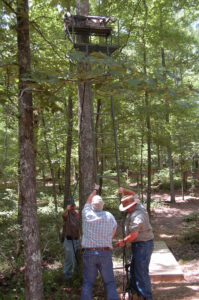
Futral also urges hunters to review and adhere to the 10 commandments of firearms safety:
- Treat every firearm as if it is loaded.
- Control the muzzle of your firearm. Keep the barrel pointed in a safe direction. Never point a firearm at anything that you do not wish to shoot and insist that your shooting and hunting companions do the same.
- Be sure of your target and beyond. Positively identify your target before you fire, and make sure no people, livestock, roads or buildings are beyond the target.
- Never shoot at water or a hard, flat surface. A ricocheting bullet cannot be controlled.
- Don’t use a scope for target identification; use binoculars.
- Never climb a tree, cross a fence or jump a ditch with a loaded firearm.
- Store guns and ammunition separately. Store firearms under lock and key and use a gun case to transport firearms.
- Make sure your barrel and action are clear of all obstructions.
- Unload firearms when not in use. Never take someone else’s word that a firearm is unloaded. Check yourself.
- Avoid drugs and alcohol when hunting or shooting. Even some over-the-counter medicines can cause impairment.
“We want everybody to stay safe and come home to hunt another day,” Futral said.
In addition to traditional hunter education courses, the Hunter Education Unit also hosts multiple one-day courses teaching firearm safety and marksmanship. Anyone interested in becoming more familiar with a rifle, pistol or shotgun should look into attending one of our Firearms 101 courses. They are exceptionally popular and can be found at www.outdooralabama.com.
David Rainer is an award-winning writer who has covered Alabama’s great outdoors for 25 years. The former outdoors editor at the Mobile Press-Register, he writes for Outdoor Alabama, the website of the Alabama Department of Conservation and Natural Resources.




